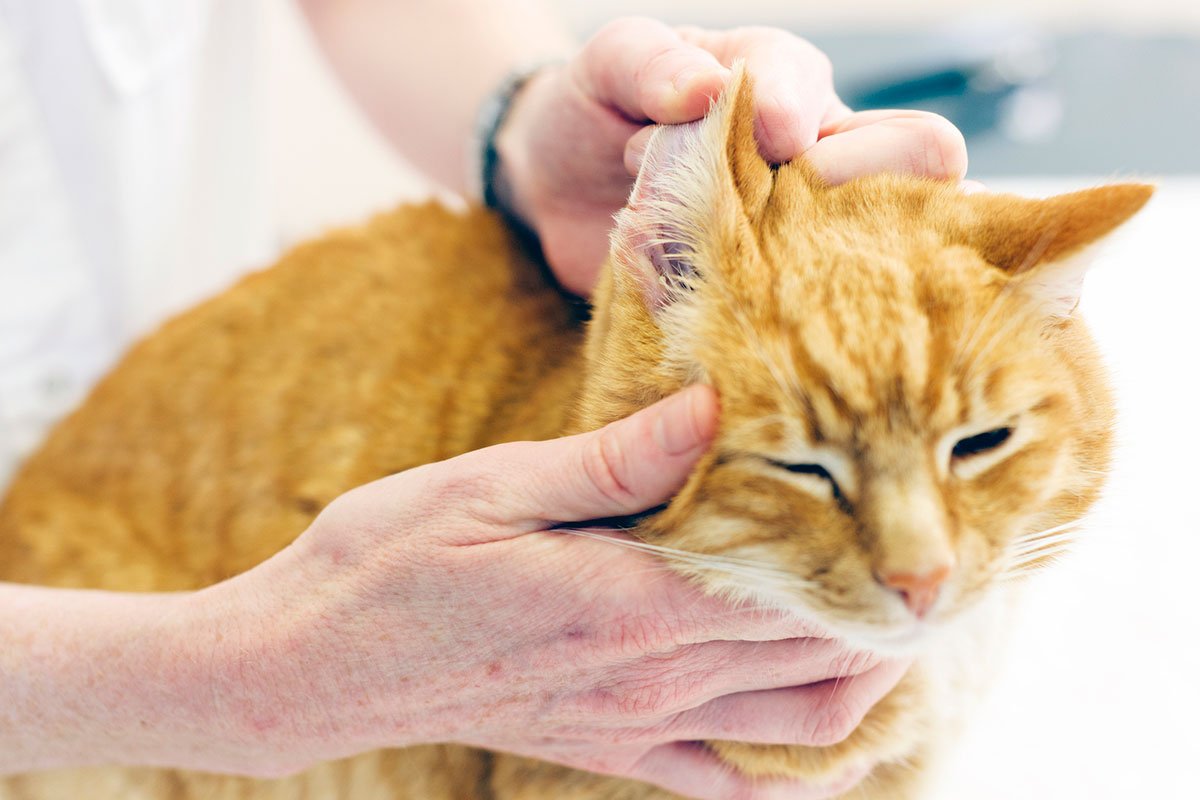Ear Mites; even their name makes many of us feel a skeevy itch in the ear. Fortunately for humans, that isn’t really an issue that many of us have to deal with. However, for cats, ear mites are common and yes, they are as annoying and nasty as they sound.
So, what are ear mites, how do cats get ear mites, and how do you get rid of them?
 What are Ear Mites?
What are Ear Mites?
Ear mites are tiny parasites that spend the majority of their life in the ear canal. An infestation of ear mites causes cats great discomfort, annoyance, itchiness, and irritation. While there are different types of ear mites, (because one type wasn’t gross enough, evidently) the one that is most commonly found in cats is called Otodectes cynotis. Thus, an infestation is sometimes called Otodectic mange.
Ear mites live and lay eggs primarily in the ear canal, but they can also wander outside the ears, onto the face and neck of an infested pet.
The bad news is they are highly contagious. The good news is unless an older cat comes in contact with an infected animal or item, adult cats are not usually plagued with this infestation.
How Do Cats Get Ear Mites?
Ear mites are extremely contagious and are usually passed from one animal to another in rapid succession. However, there are (unfortunately) many different ways your cat can end up with ear mites.
What are the Symptoms of Ear Mites?
 As a pet parent, you always need to be vigilant when it comes to detecting symptoms of illness or issue in your cat. Unfortunately, pets can’t tell you when they’re sick and cats especially, don’t like to let anyone or anything else know they are having problems. Thus, you have to look out for the symptoms of ear mites to catch them early. This way, you can prevent serious issues such as ear infections and other ear canal problems.
As a pet parent, you always need to be vigilant when it comes to detecting symptoms of illness or issue in your cat. Unfortunately, pets can’t tell you when they’re sick and cats especially, don’t like to let anyone or anything else know they are having problems. Thus, you have to look out for the symptoms of ear mites to catch them early. This way, you can prevent serious issues such as ear infections and other ear canal problems.
Here are the symptoms of ear mites:
- Inflamed ears
- Scratching their ears
- Shaking of the head
- Dark waxy or crusty discharge from the ears
How to Get Rid of Ear Mites?
If you suspect your cat has ear mites, you need to bring them to the vet and get them checked out right away. Fortunately, if it is ear mites, there are a few different ways your vet can decide to cure your furry friend, depending on the seriousness of the infection.
No matter what, though, cleaning the ears is going to be the vet’s first step. After that, the vet can choose to prescribe:
- Topical Cream that is used monthly
- One-Time Topical Treatment
- Injectable Ivermectin
Additionally, if the infestation is left untreated for too long, your vet may also need to prescribe medication for any infections or issues the ear mites cause. Although, this is all dependent upon a case by case basis.
While ear mites are gross and could cause issues for your cat if they are left untreated, this is a common issue for cats. The good news about it being common is it can be cured with relative ease, and professionals know a lot about different types of infestations. This means that you can get information about curing your pet but also on preventable measures to make sure your cat stays ear mite free.







